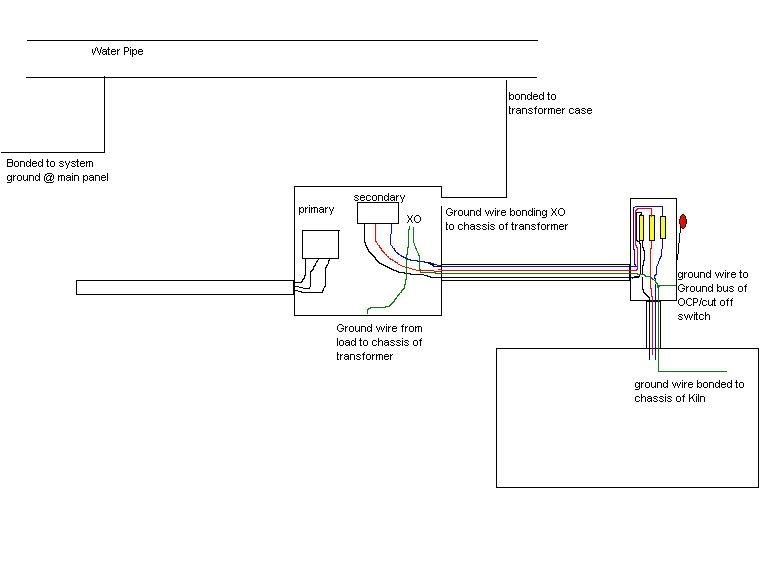hello,
I am trying to finalyze my plan for installations of a 112.5 kva 480 primary to 240 secondary transformer and the grounding/ bonding issue is seeming a bit vague. i've found another thread with a similair question to mine, but there did not seem to be a difinitive answer.
the transformer is outdoor rated and will be outside the building. there is no building steel to be grounded as it is a concrete tilt up structure with wooden framing.
there is conductive water pipe, however it is already bonded to the system ground of the main electrical service. what i've read from the code book seems to suggest that all seperately derived systems must be bonded to the water system? is this true, or is it only the case when the water system is bonded to building steel?
the primary side is 3 wire 480 with no nuetral. all of the diagrams/pictures that i have seen do not show an equipment ground coming from the primary side, but rather, the XO terminal of the secondary side bonded to the case and the building/water system. do i not need to run a ground wire from the primary side?
The secondary side will go directly to a fused disconnect, and from there to a large kiln that uses 240 3phase with no nuetral. it does however, have a ground wire bonded to the chassis. would this ground go to the XO terminal of the transformer? or does it need to connect to a ground coming from the primary side?
hopefully this makes sense. i think my main problem is i'm having trouble finding and code regarding a secondary that does not use the nuetral.
thanks for your input.
I am trying to finalyze my plan for installations of a 112.5 kva 480 primary to 240 secondary transformer and the grounding/ bonding issue is seeming a bit vague. i've found another thread with a similair question to mine, but there did not seem to be a difinitive answer.
the transformer is outdoor rated and will be outside the building. there is no building steel to be grounded as it is a concrete tilt up structure with wooden framing.
there is conductive water pipe, however it is already bonded to the system ground of the main electrical service. what i've read from the code book seems to suggest that all seperately derived systems must be bonded to the water system? is this true, or is it only the case when the water system is bonded to building steel?
the primary side is 3 wire 480 with no nuetral. all of the diagrams/pictures that i have seen do not show an equipment ground coming from the primary side, but rather, the XO terminal of the secondary side bonded to the case and the building/water system. do i not need to run a ground wire from the primary side?
The secondary side will go directly to a fused disconnect, and from there to a large kiln that uses 240 3phase with no nuetral. it does however, have a ground wire bonded to the chassis. would this ground go to the XO terminal of the transformer? or does it need to connect to a ground coming from the primary side?
hopefully this makes sense. i think my main problem is i'm having trouble finding and code regarding a secondary that does not use the nuetral.
thanks for your input.

